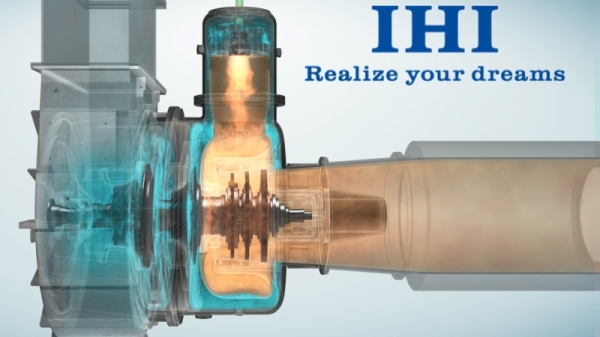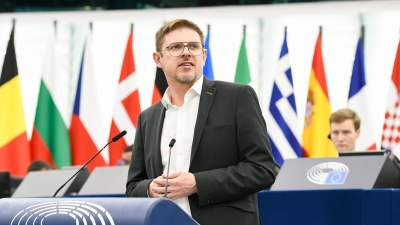The future of low carbon fuels – why all eyes are on green ammonia to help drive the net zero transition

The world is preparing for a phase-out of fossil fuels following the historic COP28 agreement, but what does the energy mix of the future look like? According to Japanese engineering company IHI, interest in green ammonia in Europe is growing as heavy industries make the transition to greener technologies.
The verdict is out – globally, we must work towards net zero while ensuring a secure and affordable energy supply. The question is on the lips of many decision makers and industry leaders, particularly those who work in hard-to-abate sectors, in which alternative fuels are best placed to achieve a just transition.
Green ammonia is fast emerging as one of the answers to this equation – with collective efforts being made to ensure it is sustainable, safe, and cost-effective – with input from experts and decision makers across the world, from Japan to the Netherlands.
Demand grows for green ammonia across Europe
The ammonia market will triple by 2050, with the majority of demand for low-carbon (or green) ammonia coming from Europe and Asia, according to an S&P Global report. Adding green ammonia to the energy mix is set to de-risk energy sources from environmental and geopolitical threats, but to ensure it is readily available in Europe, investments are required to pave the way to a well-functioning, responsible and transparent global green ammonia value chain.
Global industry leaders like IHI are already engaging with industries, connecting different regional ammonia supply and demand markets, and standardising use – meaning a green ammonia future is just around the corner for Europe.
The evolving face of ammonia: from a fertiliser to a green fuel
While usually associated with fertilisers, green ammonia’s applications today are much broader.
According to the International Energy Agency’s (IEA) Energy Technology Perspectives 2023 report, ammonia is the most cost-effective hydrogen carrier, compared to liquid organic hydrogen carriers (LOHC) and liquid hydrogen. The report shows that using ammonia as a hydrogen carrier would cost on average USD 1.9-2.2 per kilogram of hydrogen as the end product, versus USD 2.0-2.5 per kilogram for LOHC and USD 2.0-3.7 per kilogram for liquid hydrogen. The results are conclusive – green ammonia is cheaper and more efficient than hydrogen which has the potential to play an important role as the most affordable method for spreading hydrogen in Europe.

Figure: Indicative levelised cost of delivering hydrogen, by shipping-option step and distance in the Net Zero Emission by 2050 Scenario (source: IEA’s Energy Technology Perspective 2023 report, p. 321).
Ammonia also delivers great benefits like decarbonising the maritime sector and several hard-to-abate industrial technologies like turbines and boilers.
In the maritime sector, demand for carbon-free fuel has been increasing with more stakeholders looking into ammonia’s direct application as a maritime fuel.
IHI, along with four other Japanese engineering companies formed a Maritime Consortium, tasked to develop a tugboat equipped with the world’s first four-stroke ammonia-fuelled engine, which has an 80% combustion ratio. In simple terms, this means the boat will rely on green ammonia for the majority of the tugboat’s propelling, while the remaining 20% is to be filled by conventional maritime fuels. The boat is scheduled to be completed in June 2024 and will be operated in the Tokyo Bay. This represents a significant development for the shipping sector as maritime organisations and companies are actively looking into alternatives to reduce emissions from the sector and drastically reduce its impact on marine ecosystems and biodiversity.
Ammonia combustion also allows for the retrofitting and repurposing of gas facilities, like gas storage tanks in port terminals, pipelines and gas turbines in industrial settings. This represents an untapped potential across formerly gas-focused European markets. Moreover, the European fertilisers industry’s already-existing infrastructure for ammonia production can readily contribute to the future use of green ammonia, thereby preserving jobs and reducing the necessary capital investments underlying the transition.
Across industries, green ammonia has the potential to facilitate Europe’s journey to net zero. That journey starts with laying the frameworks and agreeing on standards to ensure that green ammonia remains a trusted fuel across all markets.
Laying the frameworks today, for a green ammonia future
Right now, the Japanese Government and IHI have been working with the International Organization for Standardization (ISO) to build the standards and frameworks needed to facilitate the safe use of ammonia globally. The development of international standards for safety and sustainability marks the beginning of an ammonia society in Europe, whereby upscaling green ammonia production, transport, storage and usage is within arm’s reach.
But IHI is not stopping there. Committed to net zero, the company has developed an Ammonia Carbon Dioxide Traceability Platform to provide a transparent and reliable tool to calculate carbon dioxide reductions achieved from using green ammonia. The Platform provides a record of the carbon dioxide reduction footprint of ammonia across its value chain from production to usage.
Already, we are seeing the Netherlands and Germany making headway to ensure they benefit from the adoption of green ammonia into their energy mix, with it currently on the agenda of industry leaders in the Ports of Rotterdam, Antwerp, Wilhelmshaven and Rostock, as well as the Ruhr industrial hub.
The development of technology is accelerating while global demand grows
IHI has conducted successful tests to deliver green ammonia – with applications across industries and hemispheres.
- A 100% ammonia-capable gas turbine combustion system is being developed aiming for global commercialisation in 2030. IHI has also led the development of technology that reduces nitrogen oxides including nitrous oxides to virtually zero, and will begin a year-long durability test this year. These developments present the option for green ammonia to be used as a zero emissions fuel in the future, meaning more availability of carbon-free fuels.
- IHI has also been engaging with key energy companies in India, Australia and the UAE, among others, to upscale the production and transportation of green ammonia. In IHI’s view, this will help meet the growing demand for green ammonia in Asia but also accelerate the establishment of a global ammonia value chain, soon to reach Europe.
These efforts combined confirm two things – green ammonia is on the horizon for Europe, and it will provide a transparent, just and safe transition to net zero.
A green ammonia future is just around the corner, with Europe in prime position to benefit from its applications to achieve its ambitions to reduce greenhouse gas emissions by at least 55% by 2030.



